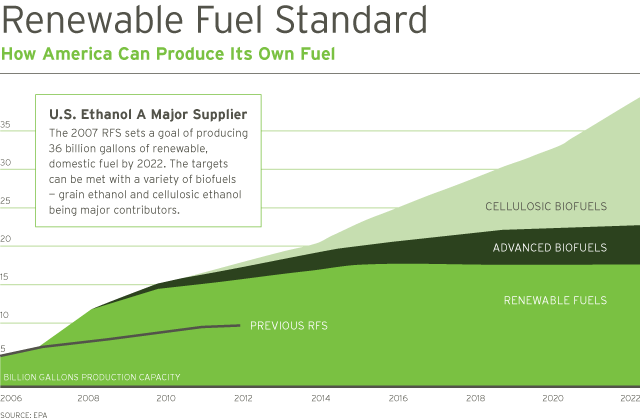The US has been adjusting its fuel economy standards over the decades, slowly increasing the minimum standards for miles per gallon (mpg). Legislating higher efficiency standards helps reduce the amount of gas consumed and the amount of emissions released. At the same time, fuel emissions standards have been adjusted to reduce CO2 in the atmosphere.
Renewable Energy Standards (RES)
In addition to the above, the goal in the US since 2007 has been to boost long-term use of renewable fuels to 36 billion gallons, increase yearly volume requirements, explicitly define and identify which specific biofuels qualify, create grandfathering for certain existing facilities, and provide specific types of waiver authority.
The US government, industries, and consumer groups are continuing to argue over what percentage of car, truck, and bus fuel should be made from renewable fuels such as biomass-based diesel, cellulosic biofuel, advanced biofuel, and total renewable fuel. In a recent mandate, the US Environmental Protection Agency stipulates a 27 percent increase in advanced biofuels made from corn stalks, farm harvesting waste, sugar cane, soybean oil, waste oils and greases, and more.
The EPA’s Renewable Fuel Standards program sets annual standards and regulations and was created as part of the Energy Policy Act of 2005, an amendment to the US Clean Power Act (CPA) and further amended by the Energy Independence and Security Act (EISA) of 2007. These programs are managed by the US Department of Agriculture and the Department of Energy.
The following video discusses the effectiveness of Renewable Fuel Standards. According to industry watchers and this video, renewable energy standards are not working as envisioned because they are resulting in increased prices in grocery stores, among other issues.








